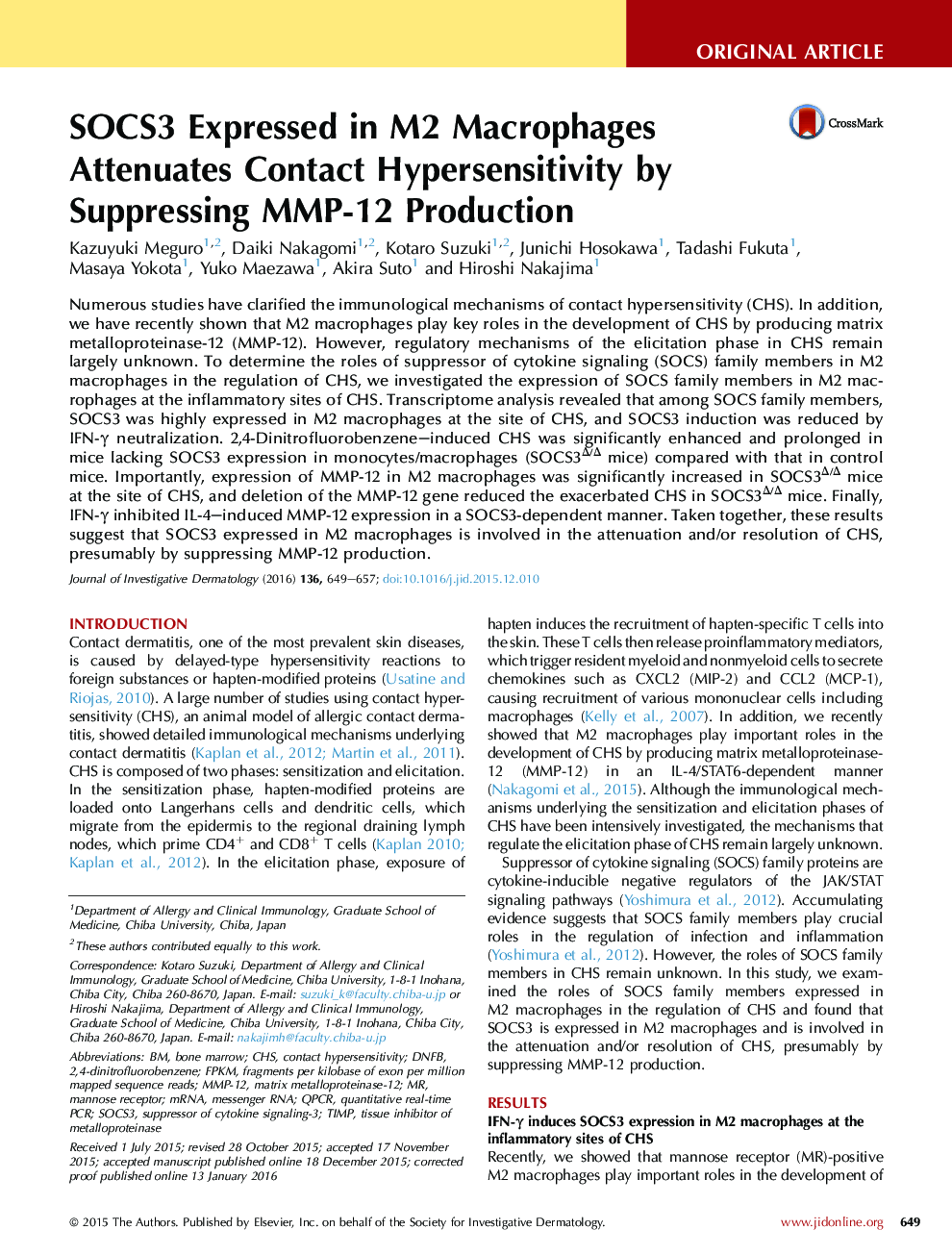| Article ID | Journal | Published Year | Pages | File Type |
|---|---|---|---|---|
| 6075049 | Journal of Investigative Dermatology | 2016 | 9 Pages |
Abstract
Numerous studies have clarified the immunological mechanisms of contact hypersensitivity (CHS). In addition, we have recently shown that M2 macrophages play key roles in the development of CHS by producing matrix metalloproteinase-12 (MMP-12). However, regulatory mechanisms of the elicitation phase in CHS remain largely unknown. To determine the roles of suppressor of cytokine signaling (SOCS) family members in M2 macrophages in the regulation of CHS, we investigated the expression of SOCS family members in M2 macrophages at the inflammatory sites of CHS. Transcriptome analysis revealed that among SOCS family members, SOCS3 was highly expressed in M2 macrophages at the site of CHS, and SOCS3 induction was reduced by IFN-γ neutralization. 2,4-Dinitrofluorobenzene-induced CHS was significantly enhanced and prolonged in mice lacking SOCS3 expression in monocytes/macrophages (SOCS3Î/Î mice) compared with that in control mice. Importantly, expression of MMP-12 in M2 macrophages was significantly increased in SOCS3Î/Î mice at the site of CHS, and deletion of the MMP-12 gene reduced the exacerbated CHS in SOCS3Î/Î mice. Finally, IFN-γ inhibited IL-4-induced MMP-12 expression in a SOCS3-dependent manner. Taken together, these results suggest that SOCS3 expressed in M2 macrophages is involved in the attenuation and/or resolution of CHS, presumably by suppressing MMP-12 production.
Keywords
Related Topics
Health Sciences
Medicine and Dentistry
Dermatology
Authors
Kazuyuki Meguro, Daiki Nakagomi, Kotaro Suzuki, Junichi Hosokawa, Tadashi Fukuta, Masaya Yokota, Yuko Maezawa, Akira Suto, Hiroshi Nakajima,
